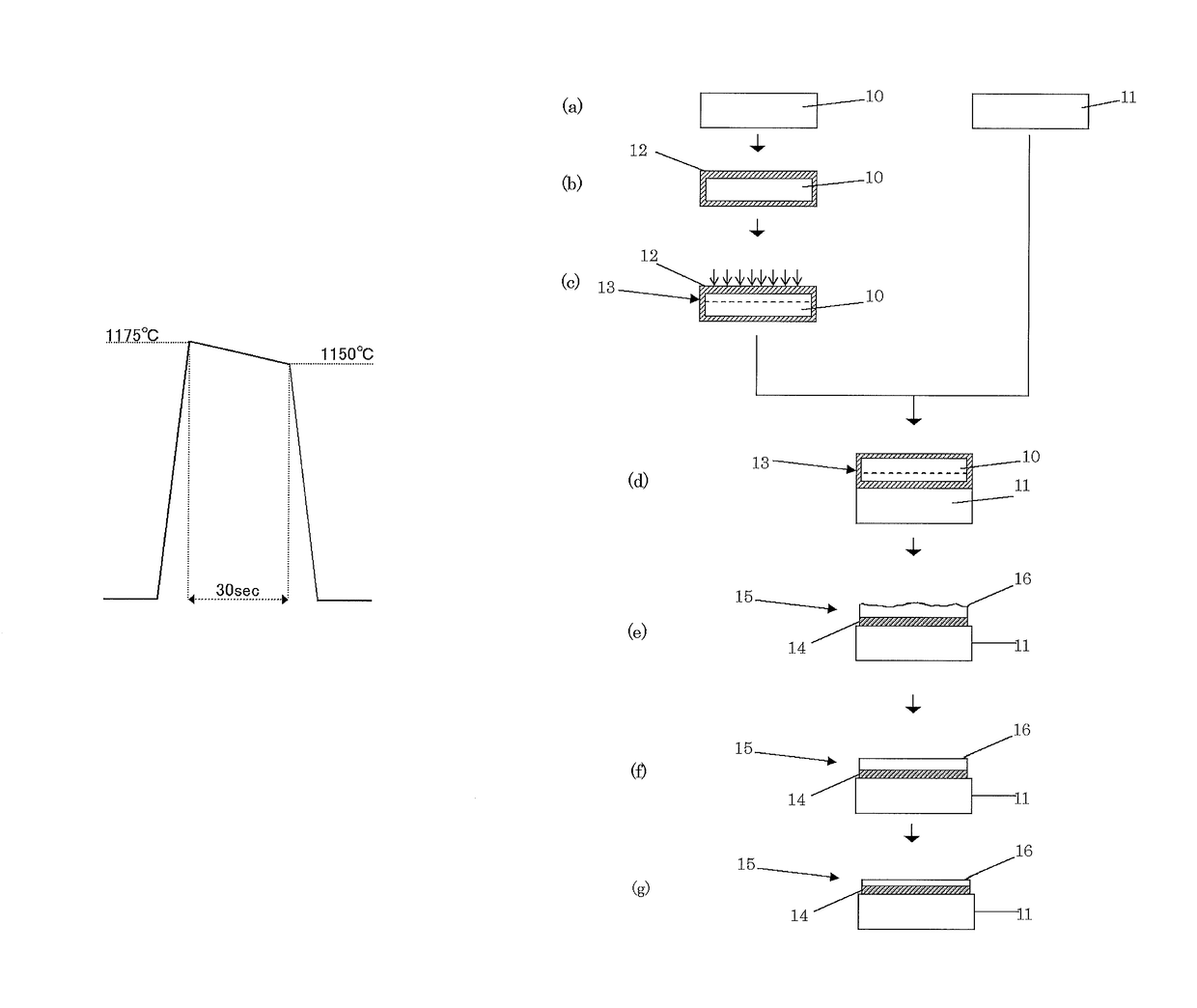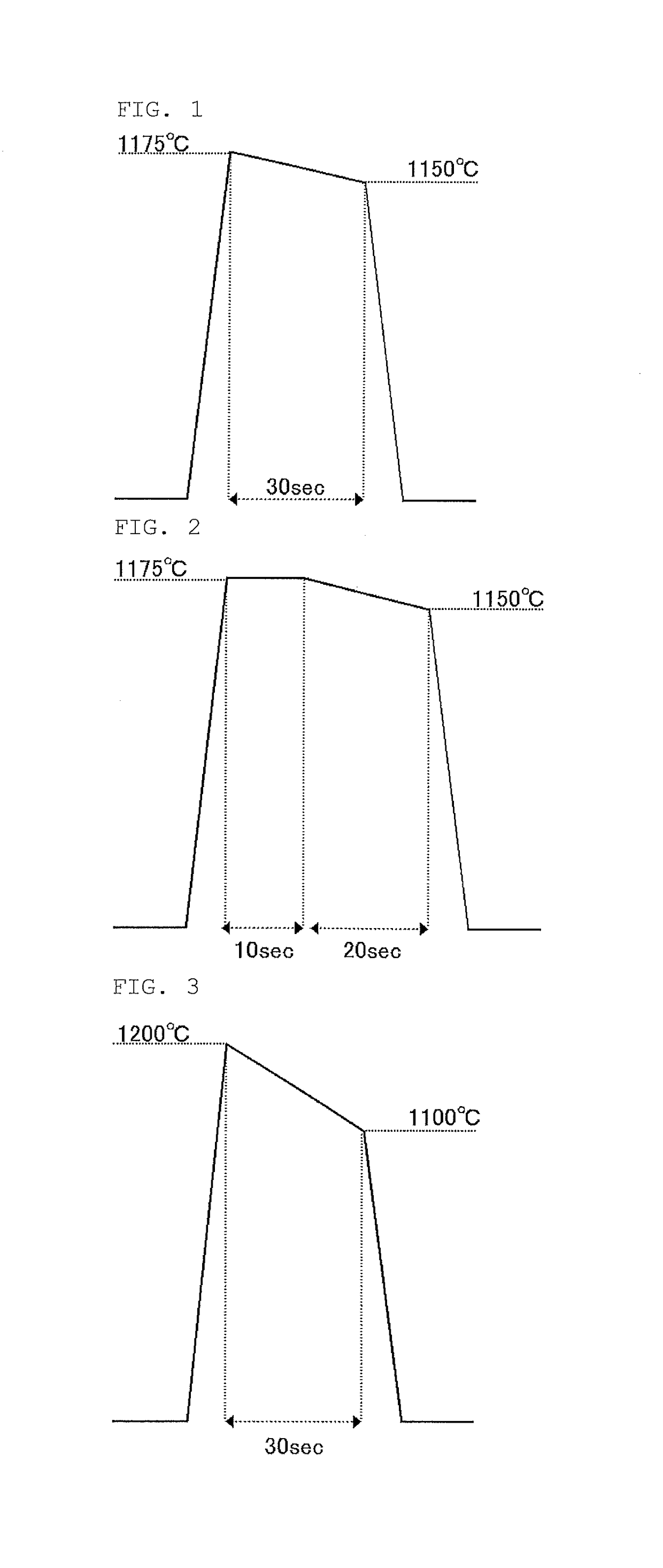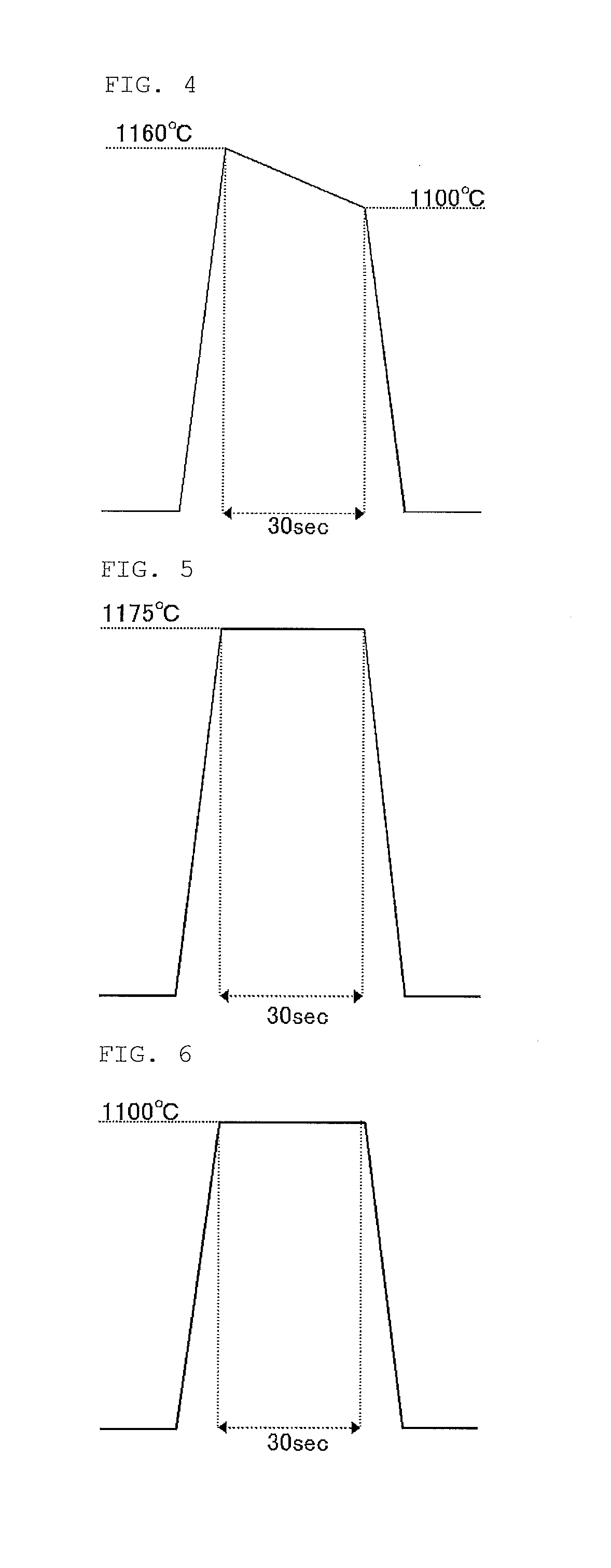Method of fabricating SOI wafer by ion implantation
a technology of ion implantation and bonded wafer, which is applied in the direction of basic electric elements, electrical apparatus, semiconductor devices, etc., can solve the problems of layer degrading uniformity and damage layer on the surface, and achieves low bmd density, smooth surface roughness, and low bmd density.
- Summary
- Abstract
- Description
- Claims
- Application Information
AI Technical Summary
Benefits of technology
Problems solved by technology
Method used
Image
Examples
example 1
[0059]A silicon single crystal wafer (having a diameter of 300 mm and a crystal orientation of ) with no crystal originated particle (COP) was prepared as a bond wafer. After a 190-nm oxide film was grown on this bond wafer, 5×1016 atoms / cm2 of H+ ions were implanted at an acceleration energy of 50 keV with an ion implantation apparatus to form a layer of the implanted ions.
[0060]A silicon single crystal wafer (having no oxide film, a diameter of 300 mm, and a crystal orientation of ) with an oxygen concentration of 22.4 ppma (ASTM'79) was prepared as a base wafer, and brought into close contact with the bonding surface of the implantation surface of the bond wafer. A heat treatment was then performed on these contacting wafers at temperatures ranging from a start temperature of 200° C. to a maximum temperature of 500° C. with a batch type of horizontal heat treatment furnace so that the bond wafer was separated along the layer of the implanted ions. An SOI layer was thereby formed ...
example 2
[0063]The bond wafer was separated along the layer of implanted ions under the same conditions as example 1 so that the SOI layer was formed on the base wafer. With a single-wafer-processing type of RTA apparatus, a surface of this SOI layer was subjected to RTA under a mixed gas atmosphere of 50% hydrogen and 50% argon; this RTA included rapid temperature increase (30° C. / second), rapid temperature decrease (30° C. / second), and temperature retention period interposed therebetween; the temperature at the beginning of this retention was 1175° C.; the retention period was first continued for 10 second at 1175° C. and then for 20 seconds while the temperature was monotonously decreased; and the temperature at the end of this retention was 1150° C. FIG. 2 shows the temperature profile of this heat treatment. An oxide film was then grown on the SOI surface by pyrogenic oxidation at 900° C. and a heat treatment at 1050° C. under an argon gas containing 1% oxygen in a batch type of vertica...
example 3
[0065]The bond wafer was separated along the layer of implanted ions under the same conditions as example 1 so that the SOI layer was formed on the base wafer. With a single-wafer-processing type of RTA apparatus, a surface of this SOI layer was subjected to RTA under a mixed gas atmosphere of 50% hydrogen and 50% argon; this RTA included rapid temperature increase (30° C. / second), rapid temperature decrease (30° C. / second), and temperature retention period interposed therebetween; the temperature at the beginning of this retention was 1200° C.; the retention period was continued for 30 seconds while the temperature was monotonously decreased; and the temperature at the end of this retention was 1100° C. FIG. 3 shows the temperature profile of this heat treatment. An oxide film was then grown on the SOI surface by pyrogenic oxidation at 900° C. and a heat treatment at 1050° C. under an argon gas containing 1% oxygen in a batch type of vertical heat treatment furnace. The oxide film ...
PUM
| Property | Measurement | Unit |
|---|---|---|
| retention end temperature | aaaaa | aaaaa |
| retention end temperature | aaaaa | aaaaa |
| retention end temperature | aaaaa | aaaaa |
Abstract
Description
Claims
Application Information
 Login to View More
Login to View More - R&D
- Intellectual Property
- Life Sciences
- Materials
- Tech Scout
- Unparalleled Data Quality
- Higher Quality Content
- 60% Fewer Hallucinations
Browse by: Latest US Patents, China's latest patents, Technical Efficacy Thesaurus, Application Domain, Technology Topic, Popular Technical Reports.
© 2025 PatSnap. All rights reserved.Legal|Privacy policy|Modern Slavery Act Transparency Statement|Sitemap|About US| Contact US: help@patsnap.com



